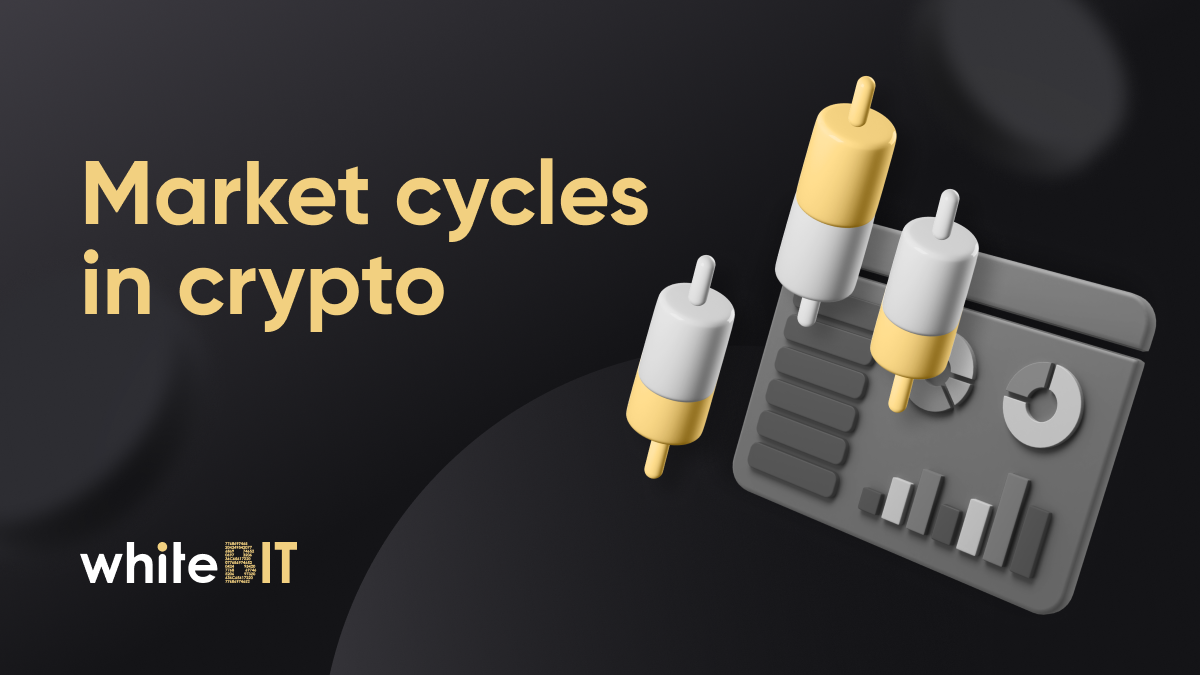What is Diversification?

Content
Cryptocurrency is becoming an integral part of an investment portfolio. But how can the capital not depend on the fate of a single coin or project? In this article, we will look at the principles of diversification and strategies for adequately allocating digital assets.
The term “diversification” comes from the Latin word diversus, meaning “different” or “diverse,” and facere, meaning “to do.” In other words, diversification measures diversity in the aggregate. In the cryptocurrency market, the basic idea of diversification is to spread investments among different assets to reduce risks and increase the portfolio’s balance.
Investment diversification was first introduced by American economist Harry Markowitz in 1952 in the Journal of Finance. The article was titled “Portfolio Selection.” His work had a significant influence on the modern theory of portfolio management. Markowitz did not stop there; he improved his theory in 1959 and published a monograph, “Portfolio Selection: Effective Diversification of Investments.” The main achievement of Markowitz was the proposal of probabilistic formalization of the concepts of “profitability” and “risk.” This made it possible to translate the problem of choosing an optimal portfolio into a formal mathematical language. Harry Markowitz was awarded the Nobel Prize in Economics for his achievements.
The financial world is evolving, but the principles remain the same. The emergence of digital assets is proof of that. Money is always associated with risk, and it is impossible to eliminate it. However, asset diversification allows us to stay calm by distributing funds between cryptocurrencies, projects, exchanges, and wallets. This way, we can minimize potential losses and adjust the portfolio’s balance.
Diversification and Asset Allocation: What You Need to Know
Diversification is an investment strategy of allocating capital to reduce risk.
“Don’t put all your eggs in one basket!” is a well-known English proverb. If all savings are in one “basket” and something goes wrong, it can lead to considerable losses. However, if the capital is distributed among several “baskets,” then losses in one basket can be compensated by income in the others.
This adage concerns the importance of asset allocation and the reliability of the places where assets are stored. Different types of wallets and exchanges are used to store cryptocurrency. Exchanges are especially noteworthy, as many beginners store their digital assets there. It is essential to choose which exchanges to store your savings on. For example, the WhiteBIT exchange is regularly audited by Hacken.io cybersecurity and holds the leadership in rating the CER.live certification platform with the highest AAA level.
Diversification in investing can be achieved by purchasing coins and tokens of different classes, investing in DeFi (decentralized financial applications) and NFT (non-fungible tokens), using different wallets and exchanges, and applying risk management strategies.
Why Do You Need to Diversify Investments?
Diversification of investments has several key benefits. First, it reduces a portfolio’s overall risk, as different assets may react differently to market fluctuations. Second, it allows you to consider various factors, including economic and political events, changes in interest rates, and inflation. Finally, a balanced portfolio helps to create a more stable basis for achieving financial goals by striking a balance between potential profit and capital preservation, which is especially important in the cryptocurrency market.
One of the tools for calculating profit and loss is PnL (Profit and Loss).
It can significantly help in the process of diversifying investment portfolios. Read more about how to calculate PnL.
Benefits of Cryptocurrency Diversification
Diversification as a risk mitigation method allows you to smooth the impact of price fluctuations of one cryptocurrency on the entire portfolio. Moreover, it expands the profit opportunities because different cryptocurrencies go through cycles of growth and decline. The advantages of diversification also create a chance to make money on other coins and projects, even in a downtrend.
Risk Management Using Cryptocurrencies
Risk management in cryptocurrency investing and trading involves several strategies and techniques to help minimize potential losses. What you as an investor can do:
– Assess risk tolerance: It is essential to assess your risk tolerance. This will help you choose appropriate digital assets and risk management strategies.
– Keep an eye on various coins and tokens: You can invest in different categories depending on your goals. Diversity is significant; this way, you reduce the impact of price fluctuations of one asset on the entire portfolio.
You can allocate tokens tied to stable assets (USDT, USDC, DAI, etc.), Bitcoin and Ethereum, utility tokens, security tokens, or NFT.
Hedging from Traditional Markets
It is a risk management strategy that compensates for losses. It helps investors and traders protect their investments from potential losses in unfavorable market movements. What are some ways to hedge cryptocurrency?
- Short position: This is a hedging strategy in which you sell an asset with the hope that its price will decrease. You can then repurchase the asset at a lower price and capitalize on the difference.
- Futures contracts: allow traders to buy and sell digital assets at a predetermined price at a specific future date.
For example, you have Bitcoin and feel your price might drop. In that case, you could sell a Bitcoin futures contract. If the prediction is correct and the price falls, this transaction will cover the losses from owning bitcoin.
- Perpetual Swaps: Perp or perpetual contract allows you to trade cryptocurrency continuously without a contract expiration date.
You can open a short position by waiting for Bitcoin’s price to drop. If it does, the profits from the perpetual swap contract will offset the Bitcoin losses.
- Options: Option contracts provide the right, but not the obligation, to buy (call option) or sell an asset (put option) at a specific price (strike price) at a particular point in time (strike date).
For example, you are worried about the price of a digital asset falling. In such a case, you can buy a put option. If the price does decline, the increase in the value of the put option will help offset the losses incurred due to the decline in the asset’s value.
- Stablecoins: An excellent opportunity to wait out volatility by exchanging some of your cryptocurrency savings for dollar-denominated tokens.
- ETF: An exchange-traded fund is a fund whose shares are traded on an exchange. Investors can buy stakes in cryptocurrency ETFs to diversify their portfolio, reduce risk, and avoid direct cryptocurrency ownership.
If you have a significant amount of bitcoins, you can buy a put option on a cryptocurrency ETF to protect your portfolio from potential price declines.
Potential for High Profitability
One of the benefits of cryptocurrency diversification is the possibility of high returns. When you spread your investments among different cryptocurrencies, there is an increased chance of making a profit, as different cryptocurrencies have different price dynamics. If one of the selected cryptocurrencies shows growth, it can offset potential losses from other assets. Thus, diversification helps increase the chance of high returns in various cryptocurrency market conditions. However, it is essential to remember that with high returns come high risks.
Why put off what you can do today for tomorrow? You can buy crypto right now and try out diversification methods in action.
Diversification Strategy on Crypto Market
Investment portfolio diversification is an essential strategy that helps investors manage risk and increase their investment stability.
A basic example of a diversification strategy is allocating investments between different cryptocurrencies. Instead of investing everything in one cryptocurrency, an investor can diversify their portfolio to include several different assets. For example, one can use Bitcoin, Ethereum, and other popular cryptocurrencies in the portfolio and stablecoins to reduce volatility. This approach reduces the risk of significant losses due to price fluctuations of a single cryptocurrency and creates a more balanced portfolio.
The second basic example is DCA (Dollar-cost averaging) — as the name suggests, this is the principle of dollar-cost averaging. The principle of DCA is that instead of buying a cryptocurrency in one significant transaction, an investor regularly buys a certain amount of that asset for fixed dollar amounts over some time. For example, you might buy $100 worth of cryptocurrency every week or month, regardless of the current price. This allows you to smooth out the impact of market volatility on your investment.
Competently creating your own crypto portfolio guarantees capital growth and minimizes possible losses in market volatility.
Conclusion
The essence of diversification as a risk management method is simple: it represents a fundamental principle in investing in the cryptocurrency market. Diversification means distributing investments between assets, projects, exchanges, and wallets. Historically founded by Harry Markowitz, this strategy allows investors to reduce risk while maintaining growth potential.
What is portfolio diversification in the context of cryptocurrencies? — It is a vital tool for asset protection and investment stability. It also applies to developing crypto projects, helping them manage risk and provide resilience in volatile market conditions. In addition, investors and entrepreneurs can take advantage of tools such as options and ETFs to effectively manage risk and ensure their capital is protected.
Risk diversification is critical to achieving financial stability and successful outcomes in the cryptocurrency market. Don’t keep your “eggs” in one basket; qualitatively, choose which baskets to keep them in. Insure your savings, make sure your portfolio is balanced, study strategies, and don’t stop there.










